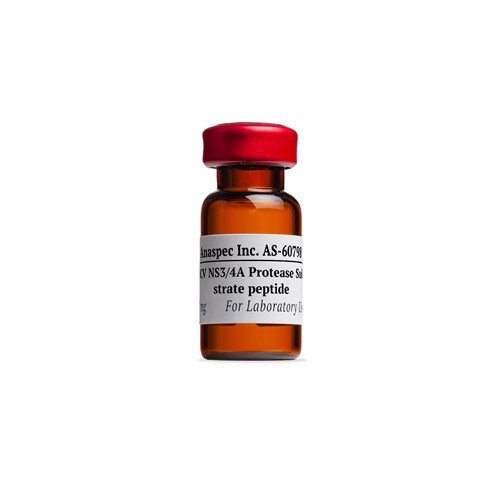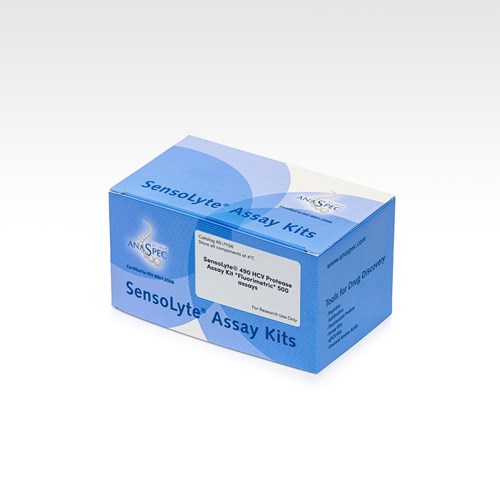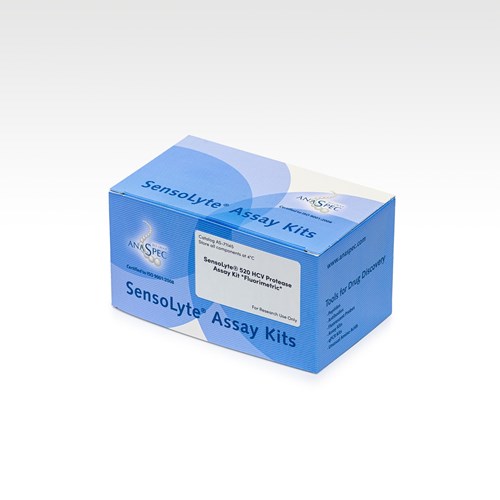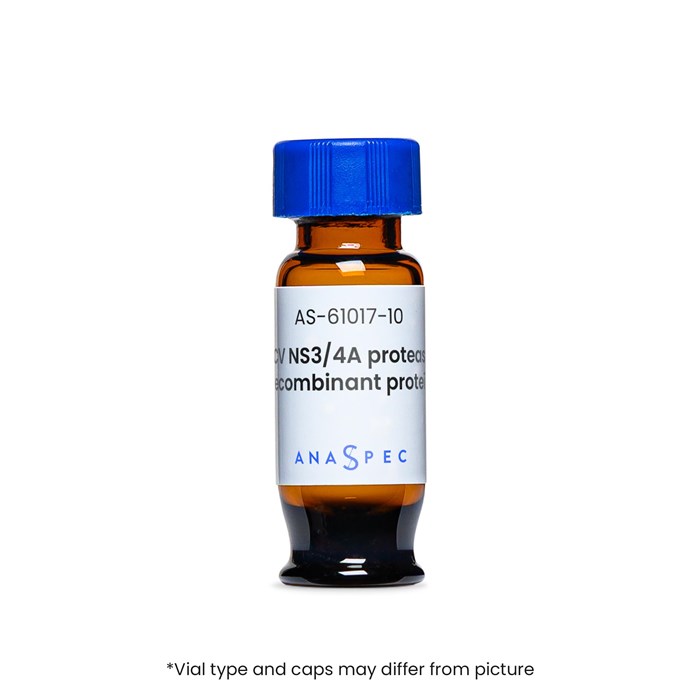HCV NS3/4A protease genotype 1b, recombinant
- Cat.Number : AS-61017-5
- Manufacturer Ref. :
-
Availability :
In stock
- Shipping conditions : Ice delivery fees must be applied
NS3 protease of hepatitis C virus (HCV), located on the N-terminal domain of HCV NS3, is responsible for the cleavage at the NS3/NS4A, NS4A/NS4B, NS4B/NS5A, and NS5A/NS5B sites of the nonstructural protein. The HCV NS3 is a chymotrypsin-like serine protease. It requires a cofactor, a 54 amino acid NS4 protein, to reach its optimal activity. The X-ray crystal structure studies show that NS3 forms a tight non-covalent complex with NS4. The NS3/4A protease is essential for viral replication and the formation of infectious viral particles, and thus has been considered as one of the most attractive targets for anti-HCV therapy.
The recombinant HCV NS3/4A protease (genotype 1b, strain: HC-J4; NCBI Accession: AF054247) was expressed in E. Coli. HCV NS3/4A protease is a 217 amino acid fusion protein (22.7 kDa) with NS4A co-factor fused to the N-terminus of NS3 protease domain. Therefore, HCV NS3/4A protease is in active form and the pre-activation by pep4A or pep4AK is not necessary. 5-20 ng of HCV NS3/4A protease is sufficient for FRET-based activity assays (SensoLyte® HCV protease assay).
Specifications
| Chemistry | |
| Molecular Mass/ Weight |
|
|---|---|
| Modification | |
| Conjugation |
|
| Quantity & Purity | |
| Concentration |
|
| Purity |
|
| Storage & stability | |
| Form |
|
| Storage Buffer |
|
| Storage Conditions |
|
| Activity | |
| Application | |
| Biomarker Target | |
| Unit definition |
|
| Specificity |
|
| Research Area | |
| Sub-category Research Area | |
| Usage |
|
| Source | |
| Host | |
| Source / Species |
|
| Codes | |
| Code Nacres |
|
Downloads
You may also be interested in the following product(s)


SensoLyte® 490 HCV Protease Assay Kit Fluorimetric 500 assays - 1 kit

Citations
HCV Protease Inhibitory, Cytotoxic and Apoptosis-Inducing Effects of Oleanolic Acid Derivatives
J Pharm Pharm Sci. . 2009 Jan 01 ; 12(3) 243 | DOI : 10.18433/j3dw2d
- C. Ma
- et al
Inhibitory effects of antrodins A-E from Antrodia cinnamomea and their metabolites on hepatitis C virus protease
Phytother Res. . 2009 Apr 01 ; 23(4) 582 | DOI : 10.1002/ptr.2657
- D.T. Phuong
- et al
Development of a cell-based hepatitis C virus infection fluorescent resonance energy transfer assay for high-throughput antiviral compound screening.
Antimicrob Agents Chemother. . 2009 Jul 20 ; 53(10) 4311 | DOI : 10.1128/AAC.00495-09
- X. Yu
- et al
Triterpenes from Cynomorium songaricium--analysis of HCV protease inhibitory activity, quantification, and content change under the influence of heating.
J Nat Med . 2008 Jul 04 ; 63(1) 9 | DOI : 10.1007/s11418-008-0267-7
- C. Ma
- et al
Hepatitis C Virus NS2 Protein Contributes to Virus Particle Assembly via Opposing Epistatic Interactions with the E1-E2 Glycoprotein and NS3-NS4A Enzyme Complexes
J Virol. . 2009 Jun 10 ; 83(17) 8379 | DOI : 10.1128/JVI.00891-09
- T. Phan
- et al
